Our Research
As climate changes, how do Earth's frozen areas affect our planet and impact society?
In this section
Related News & Stories
Filter by:
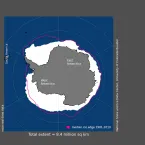
Analysis - Sea Ice Today
The seasonal decline in Arctic sea ice extent was moderate through much of May before picking up pace over the last few days of the month.
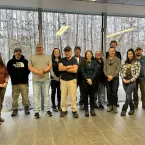
ELOKA Spotlight
Working with Indigenous communities takes time, resources, and patience, but a shift is needed in science to include community voices and observations to widen and deepen our collective breadth of knowledge. The Exchange for Local Observations and Knowledge of the Arctic (ELOKA), a NSIDC program, continues to collaborate with the Alaska Arctic Observatory and Knowledge Hub (AAOKH) to support an online community-led observational data hub.
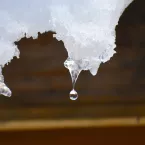
Analysis - Snow Today
Snow-covered area for the western United States hit another record for April, the second month in a row since the satellite record began in 2001. With longer days, more sun, and increasing temperatures in the coming months, concerns arise for how quickly the snowpack may melt in California with potential for flood risks.

News Release
Algae that commonly grow on snow in the Pacific Northwest have been ignored in melt models, but their presence significantly increases snowmelt compared with clean, white snow, according to a first-of-its-kind scientific research study conducted on Mt. Baker in the North Cascades, Washington.
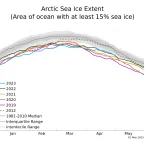
Analysis - Sea Ice Today
The rate of sea ice loss for April 2023 was slow, owing to cool conditions across the ice-covered Arctic Ocean and below-average to near-average temperatures near the ice edge.
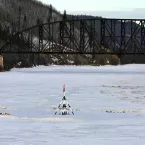
Spotlight
NSIDC’s Nenana Ice Classic: Tanana River Ice Annual Breakup Dates data set provides a record of ice-breakup dates related to an annual contest that started in 1917 and remains a heated competition over a century later.